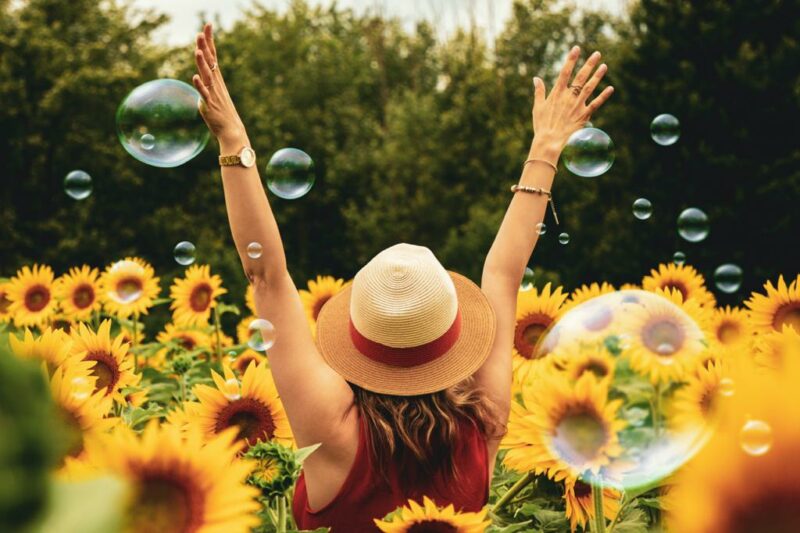

If you want to learn more about bees — they are necessary for the health of the environment and the existence of humanity. It’s possible that you would be delighted to see the diminishing population because they no longer bother you, yet their survival is an important issue. You may know that bees pollinate 75% to 85% of the food crops we consume.
This habitat has disappeared since they do not get to feed when they need to. The pesticides sprayed on the crops negatively impact the food supply chain. An excellent way to help bees is to design a bee-friendly garden, which will supply plenty of nectar.
You should know that bees are susceptible to pesticides, so you should avoid using any in your bee garden. Use naturally-based fertiliser because it won’t harm your finest garden companions. Purple, white, yellow, and blue flowers prefer to attract bees. Also, online flower delivery in gurgaon or locate a nearby nursery that sells them.
To better understand flowers in helping you build a lovely bee garden, we have chosen ten flowers for you to investigate.
Bee balm
Bees, hummingbirds, and butterflies all consider this to be one of their favourite plants. During the spring period, Bee balm uses its aroma and leaves to make tea, and they can also be crushed to give aromatherapy. This plant reliably reseeds, and bees enjoy being on it.
Lavender
Bees have a solid attraction for lavender when it is in bloom. The plant’s aroma attracts pollinators. Direct sunlight and drained soil are crucial in ensuring that this plant can develop. Because it features light silver foliage, your winter garden will seem rather impressive. The lavender plant is very productive, so you can also use some of its branches to decorate your home. But there will be many branches left for the bees.
Crocus
Since squirrels only leave crocus plants alone, these plants are for bees only, and they’re safe. Seed large quantities of these plants to gain a higher impact on the bees and the garden. It is safe for them to be grown in full or partial sunlight. The early-bloomers, as the term “nectar” suggests, supply bee larvae with nectar.
Borage
To enhance the unique aesthetic of your garden, this drought-tolerant plant adds a distinctive and striking shape and colour. Borage produces seedlings frequently, ensuring that it lasts a long time. Furthermore, it has leaves that are flavoured with cucumber. You can eat these leaves raw, cook them, or steam them. Borage is well hidden because bees will keep them hidden in the leaves.
Black-eyed Susan
Black-eyed Susan is an excellent plant for a honeybee favourite. Introducing this playful concept will ensure that bees are drawn to its bright yellow colour with brown-centred blossoms where they can feed on nectar. For some time, you won’t have to replace this shrub. It will make a good impact on your beekeeping if you take pride in having it in your garden.
Foxglove
This flowering plant has an unusual blossom shape that gives beauty to the landscape in the spring and summer months. The plant is excellent for those like you with shaded locations and moist soil. Please keep them in constant growth for two years and see how long they continue in growth whenever you reseed them. Cheer for the bees as they make their way to Foxglove.
Chives
Chives are the first to flower in the spring. Hence they supply the first nectar to the bees after they’ve hibernated throughout the winter. Proliferates and their herbs can be used for cooking. Chives are great for gardeners, no matter what climate they’re in.
Coneflower
One of the critical attractors of bees is the Coneflower. It begins blooming in midsummer and lasts until fall, providing bees with nectar for a considerable period. Bees also scavenge for the pollen generated by plants. Hence the bees choose this wildflower.
Hyacinth
Grape Hyacinth resembles tiny flowers that brighten your yard with their blue hue and lovely scent, naturally luring bees to your garden. Because it looks like grapes, the nectar and pollen it contains are called “the grape’s delicious nectar.” Everyone regards these tiny blue blossoms as being incredibly thoughtful.
Salvia
Salvia is widely available in several colours, including purple, blue, and red, and it is pretty easy to discover which is the perfect colour for your garden. Some species of Salvia, perennial or annual, encourage bees to visit and benefit the environment and your garden.
Conclusion
Send flowers online to build a better habitat for bees, including plants like these floral wildflowers. However beneficial bees may be, they must be saved at all costs for the survival of the human species. We all pitch in and do our part to ensure they all live.






